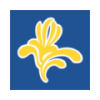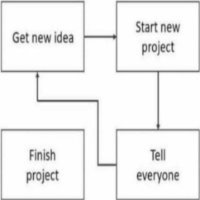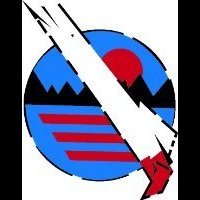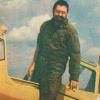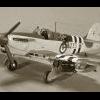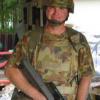Search the Community
Showing results for tags 'Meteor'.
-
Hi everyone, With Nuremberg Toy Fair officially underway, I've been given the go ahead by Luke at Revell to share this top secret project! I was honoured to be given the opportunity by Luke, to build the very first test build of the new Meteor in 32nd by Revell. This is the first full 3D printed build up of what will become the kit later in the year, hence why the surface may look a little rough, as it is 3D printed and not plastic injection moulded yet. Luke was over the moon when he collected it as this is the culmination of hundreds, if not thousands of hours of work, to finally be able to see it built up for the first time. This is now on display at Nuremberg Toy Festival over the next few days for the modelling world's eyes to view. I'll post some more detailed photos in the coming days on my Facebook page linked below so that people can see the amazing detail on the engine, wheels bays and more. Thanks again to Luke and Revell for this and I can't wait to crack on with the other builds that will soon fly my way! Disclaimer - This is as finished as Revell wanted it... in Primer to show overall shape, size and details only. This is the very first full 3D print with no plastic parts and so surface detail is not final. https://www.facebook.com/jamesbuildsandmore/
- 21 replies
-
- 63
-

-

-

-
Hi Gloster Meteor F. Mk. 8 from Xtrakit. This plane is WH470 of No. 600 Squadron when based in RAF Biggin Hill, early 1950s I didn't like the kit, had number of issues with it - fitting problems, the way they designed undercarriage. I also shouldn't have weathered it - it looked better clean . Too late to fix that I guess.
-
In Summer 2022 - Airfix is to release a new tool 1/72nd Gloster Meteor F.Mk.8 kit - ref A04064 Source: https://uk.airfix.com/products/gloster-meteor-f8-a04064 V.P.
- 427 replies
-
- 18
-

-

-
Special Hobby is to release in Spring 2107 a 1/72nd Gloster Meteor Mk.4 "World Speed Record" kit - ref. SH72361 Source: http://www.specialhobby.net/2017/02/sh72361-gloster-meteor-mk4-world-speed.html Box art V.P.
- 116 replies
-
- 6
-

-
- Gloster
- Special Hobby
-
(and 1 more)
Tagged with:
-
I think I know the answer to this before I ask, but if you don't ask, you don't get. Has ANYBODY ever seen a picture of the single Meteor FR.5? I have a drawing from Edward Shacklady's book buy I have never seen a photograph. In case you weren't aware, the FR.5 was the intended fighter reconnaissance version of the F.4, similar to how the FR.9 was to the F.8. The prototype, VT347 was a converted F.4 but crashed on its first flight on 15th June 1949, very sadly killing its pilot Rodney Dryland. I cannot imagine it was never photographed but perhaps it would have taken place as part of what would have been the development programme had it not been cut short. So, has anybody seen a picture of the ill-fated VT347? Cheers, Neil
-
Special Hobby is to release in 2018 a family of Armstrong Whitworth Meteor nightfighters kits incl. NF.11/12/13 & 14 - ref. SH72358, 72360, 72363 & 72364 Source: http://www.specialhobby.net/2017/12/sh72358360363364-aw-meteory-nf.html Canopies mould V.P.
- 179 replies
-
- 4
-

-
- Meteor
- Armstrong Whitworth
-
(and 1 more)
Tagged with:
-
Overall, good kit, main issues were with decals (terrible print quality and crumbling/folding) and bad fit. Really nice details though and I still enjoyed making it. Glad I'm finished with it however. Thanks for looking!
- 14 replies
-
- 39
-

-

-
- Special Hobby
- Meteor
-
(and 1 more)
Tagged with:
-
Is CMK the only game in town? Not impressed with the Aeroclub stuff and Neomega stuff seems to have vanished.
- 11 replies
-
- 1
-

-
My build of the Airfix 1/72 Gloster Meteor F.8 (A04064) Dave
-
Hello all, Here's my just finished Airfix Meteor F.8, done as a Fokker built one, as used by 325 Squadron at Woensdrecht Air Base between 1951 and 1956. Markings came from a Dutch Decal sheet, with the stencils from the kit. I replaced the pitot tube with a metal one from Master. Painted with MRP (the green and PRU Blue) and Mr. Color (the grey). I enjoyed the build very much, except the nose, which fits poorly, and you have to install the nose gear quite early during the construction, including the door. I didn't put the door in place before adding the nose cone, so it wouldn't fit properly when I tried to put it in place later. I cut away a bit of the door, so it doesn't look quite right. Ah well. Thanks for looking! Pete
- 13 replies
-
- 49
-

-

-
Hi all, didn't realise how soon it was before this GB opened- luckily I've just bought Special Hobby's 'Middle East Meteors' kit in 1/72. As the paints suggest, I'll be building this in the early Israeli blue/brown scheme, with this specific aircraft being used as a target tug by 107 squadron until 1964. Here's the sprue shot, I have cut the main fuselage and wing pieces off to test the fit and so far it looks good. Looking forward to this build- even if the dayglo stripe decals terrify me 😅 Thanks for looking in!
- 7 replies
-
- 9
-

-
- Special Hobby
- Meteor
-
(and 1 more)
Tagged with:
-
Meteor T.Mk7 "British Jet Trainer" (SH72468) 1:72 Special Hobby The Gloster Meteor was the first British jet fighter and the Allies' first operational jet aircraft during the Second World War. The Meteor's development was heavily reliant on its ground-breaking turbojet engines, pioneered by Sir Frank Whittle and his company, Power Jets Ltd. Development of the aircraft itself began in 1940, although work on the engines had been underway since 1936. The Meteor first flew in 1943 and commenced operations on 27 July 1944 with No. 616 Squadron RAF. Nicknamed the "Meatbox", the Meteor was not a sophisticated aircraft in terms of its aerodynamics, but proved to be a successful combat fighter. Several major variants of the Meteor incorporated technological advances during the 1940s and 1950s. Thousands of Meteors were built to fly with the RAF and other air forces and remained in use for several decades. The Meteor saw limited action in the Second World War. Meteors of the Royal Australian Air Force (RAAF) provided a significant contribution in the Korean War. Several other operators such as Argentina, Egypt and Israel flew Meteors in later regional conflicts. Specialised variants of the Meteor were developed for use in photo-reconnaissance and as night fighters. The T.7 twin seat trainer was developed from the Mark 4. 640were produced for the Royal Air Force, 43 for the Royal Navy; and 72 for export. 20 Belgian F.4s were modified locally into T.7s. Many nations would operate the T.7 with a pair of T.7s being the first jet aircraft to land in Israel. These were locally converted to carry belly mounted camera. The Kit This is a re-release by Special Hobby of the MPM kit, which has also recently been re-released by Zur Ffrom as well. Construction first begins in the cockpit which builds up to a complete module that slots into the fuselage when built up. The centre bulkhead is added to the floor and then side consoles are added. The centre instrument console is then built up and installed along with both seats. The rear bulkhead goes on, and both control columns. To the underside of this module the nose gear well is then added. This assembly can then go into the right fuselage. The pilots instrument panel then goes in as do the remainder of the side consoles. The fuselage can then be closed up with the nose gear now being fitted. Construction now moves onto the wings. Firstly the engines and jet pipes need to be assembled. There is a basic representative of the Derwent which you will see the front face of through the intake. Behind this there is the jet pipe, and exhaust. These go into the one part lower wing. In front of the engines goes the fairing over the front wing spar which is seen through the intake. Single part intake inners are then fitted. Moving on the the upper wing the main gear wells need to go in. The two wing sections can then be joined. The intake leading edges, and exhaust trailing edges are then fitted. The fuselage can now be joined to the wings. At the rear the tail planes then go on. The main gear units are then assembled and added along with their retraction struts and the main gear doors. Like the real units these are complicated and care need to get them right. Take note to assemble the wheels correctly and not as per the instructions. The wheels are not handed like most aircraft. Luckily here the wheels are separate from the mud guards so they can be put in the correct way around. The modeller will need to make their own stay from the rear of the mudguard. To finish off the wing and belly tanks are fitted followed by the canopy, aerial and pitot tube. Markings The glossy decal sheet is printed in house and looks sharp and in register. There are markings for three aircraft G-AKPK Gloster Company demonstrator WV488 No.43 Sqn RAF, RAF Tangmere 1949 I-19 Royal Netherlands Air Force 1950s. No.328 Sqn at Soesterberg where it still resides. Conclusion It is good to see the T7 back out there. Highly recommended. Review sample courtesy of
-
The only combat use of RAF Vampire FB.5 and Meteor F.8 took place in 1951-55 during the Operation Firedog. Albeit the photos are known of the High Speed Silver No.60 Sq. Vampire FB.5s (WA237-WA276 range), the pictures of FB.9s (No.45 and No.60 Sq., WG, WL and WR serials) show them in camouflage - presumably DG/DSG over PRU. My question is whether are there any photos (or other documents) confirming existence of CAMOUFLAGED FB.5s over Malaya in 1950-56 period? Was this variant used only by No.60 Squadron? It is said that in April 1952 the ex-No.60 Sq. FB.5s were flown to Kai Tak to equip No.28 Sq. And these a/c (during their Hong Kong period) are sometimes shown as camouflaged. Were they repainted in HK or were they taken already camouflaged from Butterworth? The situation is even worse with Meteor F.8. It is said that only two aircraft were deployed with No.45 Squadron in 1955. No photos, no idea about the looks, even no serials are known to me. Does anybody know more details about these two specimen? Cheers Michael
- 22 replies
-
- 1
-

-
- Operation Firedog
- Vampire
-
(and 1 more)
Tagged with:
-
Hi all Because I haven't any motivation to pursuit my SIAI 260, I decided to start another kit This time I choosed the Meteor NF Mk14 from Special Hobby I already build au Special Hobby NF Meteor and kept a well remember. There are no reason that the NF 14 will diffirent I started the build with the cockpit The details for the scale are very impressive It need only a good paint The panels side THe cockpit floor and the panels side The rear bulk and the panel instrument
- 27 replies
-
- 22
-

-
Special Hobby is to release a 1/72nd Gloster Meteor T.Mk.7 1/2 (T.Mk.7 with a F.Mk.8 tail) kit - ref.SH72317. Source: http://www.mpmkits.eu/2014/11/sh72317-gloster-meteor-t-mk7-12-t-mk75.html Box art V.P.
- 39 replies
-
- 2
-

-
After losing interest in military aircraft kits for a bit, then modelling altogether (briefly), I’m now trying to rekindle my interest for the hobby. I’d been deliberating over what to make from my stash, and considered a 1/72 Victor, Vulcan or Sea King, a 1/48 Lightning, or Canberra with TT.18 conversion, before deciding it’s best to start with a simpler kit. Hopefully this Meteor kit gets me back into the swing of things! A familiar one to most on here, with some great builds I’ve seen. I’ve two in the stash, with plans to do one as ‘Winston’ sometime, and perhaps I’ll buy another to do in 56 Sqn colours. This one, however, I’ll be building out of the box, in its 111 Sqn markings. Plenty on the sprues! Very nice decals, both options look good, but I’ll be going for this camo one: Some questions, if anyone could be so kind as to let me know please? 1). The instructions say Humbrol 56 undersides; shouldn’t it be high speed silver? 2). Did this aircraft fly without the all yellow fin? 3). The presentation of the fuselage registration number for WL123 looks to be in an odd font, is it correct? Should it look the same as for WH364?
-

North Weald Squadron aircraft - post WW2
ththtttu7 posted a topic in Ready for Inspection - Aircraft
Hi, Starting with these two, I'm building a 1/48 scale Airfix Vampire F3 for each of the North Weald based squadrons: 72, 601 & 604. This kit builds well in my experience, with attention needed for nose weight and careful forward fuselage alignment. 72 Squadron markings were assembled from aftermarket sources. This head-on photo, really emphasises the clean lines of the Vampire The Vampires join the existing collection of other North Weald based types: 111sqn Meteor F8 and Black Arrows Hunter (not pictured); and the Spitfire F22, PK624 which was the 604 Squadron hack.- 21 replies
-
- 46
-

-

-
Gloster Meteor F.8 / FR.9 "Middle East Meteors" (72463) 1:72 Special Hobby The Gloster Meteor was the first British jet fighter and the Allies' first operational jet aircraft during the Second World War. The Meteor's development was heavily reliant on its ground-breaking turbojet engines, pioneered by Sir Frank Whittle and his company, Power Jets Ltd. Development of the aircraft itself began in 1940, although work on the engines had been underway since 1936. The Meteor first flew in 1943 and commenced operations on 27 July 1944 with No. 616 Squadron RAF. Nicknamed the "Meatbox", the Meteor was not a sophisticated aircraft in terms of its aerodynamics, but proved to be a successful combat fighter. Several major variants of the Meteor incorporated technological advances during the 1940s and 1950s. Thousands of Meteors were built to fly with the RAF and other air forces and remained in use for several decades. The Meteor saw limited action in the Second World War. Meteors of the Royal Australian Air Force (RAAF) provided a significant contribution in the Korean War. Several other operators such as Argentina, Egypt and Israel flew Meteors in later regional conflicts. Specialised variants of the Meteor were developed for use in photo-reconnaissance and as night fighters. Israel and its main adversaries Egypt and Syria all flew these aircraft. The Kit This is the the MPM kit re-issued by Special Hobby with parts for the F.8 and FR.9 in the box. The MPM kit is of the higher short run variety but builds into a nice kit with care. If modelling the FR.9 the F.8 nose will have to be removed. While the new nose is clear for the camera window, no interior for the nose is included. Having built one of these kits nose weight is a must. The underside of the main cockpit forms the front wheel well and the nose gear can then be built up and added in here. With the fuselage together the tail planes can now be fixed on. Moving to the main wings the wheel wells are attached to the lower wing. In each nacelle the engine front and airflow splitter over the main spar is added. Then the wings can be joined and added to the main fuselage. The main gear can be assembled and added to aircraft, along with the intake lips and exhausts. The instructions show drop tanks being added, though in all the pictures of WK935 I have seen it is flying without them. The last steps in construction are to add the canopies, a couple of aerials and the pitot tube. Decals Markings are provided for 4 aircraft. The decals are nicely printed and look quite thin and glossy. Meteor FR.9 No.36 - 111 Sqn IDF, Ramet David, Israel 1955. High Speed Silver Finish? Meteor F.8 No. 09 - 107 Sqn IDF, Ramat David, Israel 1962-64. Three colour camo with daygo stripes. Meteor F.8 No. 1419 - Royal Egyptian Air Force 1955. High Speed Silver finish. Fetero F.8 No. 4141 Sqn Syrian Arab Air Force 1956, 3 Colour Camo. Conclusion This is the only kit in 1.72 for this unusual aircraft, recommended if you like Meteors, or prototype/one off airframes. Review sample courtesy of
-
Special Hobby has just announced a 1/72nd kit of the Gloster Meteor F.Mk.8 "prone" - ref. SH72569. Source: http://www.aeroscale...ticle&sid=12874 V.P.
- 30 replies
-
Armstrong Whitworth Meteor NF.Mk.11 (SH72437) RAF Squadrons 1:72 Special Hobby Yes that an Armstrong Whitworth Meteor, not a Gloster one. Gloster did design the Meteor, however by the time the cold was was upon us the RAF had Meteors in the day fighter role but were still using Mosquitoes in the night fighter role. At the time Gloster were heavily into the design of the Javelin for the RAF so it was put to AW to design and build a Night Fighter version (they did build the majority of Fighter Meteors for the RAF as well). The NF Meteor would come about as an amalgamation of meteor parts already in use, the main body was that of the tow seat T.7 but with the later tail of the F.8. The four 20mm cannon were moved into the wing outer spans to accommodate the AI Mk 10 Radar in the nose. Like the T.7 the crew would not be afforded ejection seats. The first aircraft flew in May 1950. Later on the NF.12 would feature a US built APS-12 radar, the NF.13 being a tropicalised NF.11. The final version of this venerable night fighter would be the NF.14 featuring a more modern blown canopy, As well as being supplied to the RAF NF.11s were supplied to other NATO countries. Belgium received 24, Denmark 20 and France had 41. The Kit This is a recent new tool kit from Special Hobby. As a new tool the moulding are of good quality with good detail and nice recessed panel lines. The kit arrives on 4 main sprues, a smaller sprue and a clear sprue. Construction first begins in the cockpit which builds up to a complete module that slots into the fuselage when built up. The centre bulkhead is added to the floor and then the left side is added. The centre radar console is then built up and installed along with both seats. The rear bulkhead goes on, and in the front cockpit the control column goes in. The right side can then be added. To the underside of this module the nose gear well is then added. This assembly can then go into the right fuselage. The pilots instrument panel then goes in as does the deck behind the radar operator. The fuselage can then be closed up. Construction now moves onto the wings. Firstly the engines and jet pipes need to be assembled. There is a basic representative Derwent which you will see the front face of through the intake. Behind this there is the jet pipe, and exhaust. These go into the one part upper wing. In front of the engines goes the fairing over the front wing spar which is seen through the intake. Single part intake inners are then fitted. The aperture for the fuselage at the leading edge of the wing will need to widened slightly. Moving on the the lower wing the main gear wells need to be built up. The two wing sections can then be joined. The intake leading edges, and exhaust trailing edges are then fitted. The fuselage can now be joined to the wings. At the rear the tail planes then go on. The main gear units are then assembled and added along with their retraction struts and the main gear doors. Like the real units these are complicated and care need to get them right. At the front the nose wheel and its doors are then added also. To finish off the wing and belly tanks are fitted followed by the canopy, gun muzzles and pitot tube. Markings The glossy decal sheet is printed in house and looks sharp and in register. There are marking for three aircraft WD603/C No.29 Sqn., RAF Tangmere, West Sussex, Great Britain, Jul 1953 WM293/B, No.68 Sqn., RAF Wahn, Federal Republic of Germany, 1956 WM223/U No. 151 Sqn., RAF Leuchars, Fife, Scotland, 1954 WD642/A No.256 Sqn., 2nd TAF, RAF Geilenkirchen, Federal Republic of Germany, 1958 Conclusion It is good to see a new kits of the Meteor Night Fighter out there. Highly recommended. Review sample courtesy of
-
Gloster Meteor PR Mk.10 "High-Altitude Photo-Recce Version" 1:72 MPM / Special Hobby (72560) The twin-engined Gloster Meteor was jointly developed by Frank Whittle’s Power Jets Limited and the Gloster Aircraft Company. It was first flown in March 1943. When 616 Squadron commenced operations on the type in July 1944, it became the first jet fighter to enter operational service with the Royal Air Force. Forbidden to fly the Meteor over occupied territory, 616 Squadron used the new aircraft to combat the threat of V-1 flying bombs, eventually accounting for 14 of them. The design evolved considerably in the post-war period, spawning night fighters, reconnaissance aircraft and target tugs among other variants. The PR.10 was something of a hybrid aircraft. With the wings of the Mk.III, the tail of the Mk.IV, Fuselage of the Mk.8 and nose from the PR.9. The PR.10 was phased out in the early 1960s with the Canberra taking on the role. Special Hobby's Meteor is a tried and tested kit, having been released in multiple guises by Special Hobby themselves, Revell and (briefly) Airfix. The cockpit is well detailed for the scale, and there is a decal for the instrument panel. Nose weight is an absolute must, and there should be enough space for this in the area of the nose in front of the cockpit. The lower wing is moulded as a single span up to and including the engine nacelles, with separate outer wings, while the upper wing is split into four parts. For the Mark you will have to use the longer outer wing sections. The landing gear is nicely detailed, but joins to the landing gear bays by way of a simple butt joint, so watch out as it could be easily broken off once fitted. The canopy is pretty good, and Special Hobby have included masks for all of the different marking options provided on the decal sheet. An addition in this kit is a pair of rear wing root fairings in resin to replace the kit ones. Decals The decal sheet provides a nice 5 options covering 3 different schemes. From the box you can build; WB156/A-B No.541 Sqn RAF, RAF Buckesberg, Germany 1950 (Dark Green / Medium Sea Grey over PRU Blue) VS975/A-N No.541 Sqn RAF, RAF Buckesberg, Germany 1950 (Dark Green / Medium Sea Grey over PRU Blue) VS975/A-N No.541 Sqn RAF, RAF Buckesberg, Germany 1951-53 (Medium Sea Grey over PRU Blue) WB172/F No.13 Sqn RAF. RAF Kabrit (Egypt) 1951-53 (High Speed Silver overall) VA987 No.81 Sqn RAF, RAF Selter (Singapore) 1960 (High Speed Silver overall) Conclusion Special Hobby has the day 1/72 Meteor market pretty sewn up, but it's still good to see them using their tooling to release some of the lesser known types. The overall package is pretty complete, overall, this is a nice kit an can be highly recommended. Review sample courtesy of
-
Meteor T.Mk7 (FR0045) 1:72 Azur FRROM The Gloster Meteor was the first British jet fighter and the Allies' first operational jet aircraft during the Second World War. The Meteor's development was heavily reliant on its ground-breaking turbojet engines, pioneered by Sir Frank Whittle and his company, Power Jets Ltd. Development of the aircraft itself began in 1940, although work on the engines had been underway since 1936. The Meteor first flew in 1943 and commenced operations on 27 July 1944 with No. 616 Squadron RAF. Nicknamed the "Meatbox", the Meteor was not a sophisticated aircraft in terms of its aerodynamics, but proved to be a successful combat fighter. Several major variants of the Meteor incorporated technological advances during the 1940s and 1950s. Thousands of Meteors were built to fly with the RAF and other air forces and remained in use for several decades. The Meteor saw limited action in the Second World War. Meteors of the Royal Australian Air Force (RAAF) provided a significant contribution in the Korean War. Several other operators such as Argentina, Egypt and Israel flew Meteors in later regional conflicts. Specialised variants of the Meteor were developed for use in photo-reconnaissance and as night fighters. The T.7 twin seat trainer was developed from the Mark 4. 640were produced for the Royal Air Force, 43 for the Royal Navy; and 72 for export. 20 Belgian F.4s were modified locally into T.7s. Many nations would operate the T.7 with a pair of T.7s being the first jet aircraft to land in Israel. These were locally converted to carry belly mounted camera. The Kit This is a re-release by Azur Frrom of the MPM kit. This now includes masks (not shown) for the heavily framed canopy. The masks look to be the same as the new tape masks from Special Hobby. Construction first begins in the cockpit which builds up to a complete module that slots into the fuselage when built up. The centre bulkhead is added to the floor and then side consoles are added. The centre instrument console is then built up and installed along with both seats. The rear bulkhead goes on, and both control columns. To the underside of this module the nose gear well is then added. This assembly can then go into the right fuselage. The pilots instrument panel then goes in as do the remainder of the side consoles. The fuselage can then be closed up with the nose gear now being fitted. Construction now moves onto the wings. Firstly the engines and jet pipes need to be assembled. There is a basic representative of the Derwent which you will see the front face of through the intake. Behind this there is the jet pipe, and exhaust. These go into the one part lower wing. In front of the engines goes the fairing over the front wing spar which is seen through the intake. Single part intake inners are then fitted. Moving on the the upper wing the main gear wells need to go in. The two wing sections can then be joined. The intake leading edges, and exhaust trailing edges are then fitted. The fuselage can now be joined to the wings. At the rear the tail planes then go on. The main gear units are then assembled and added along with their retraction struts and the main gear doors. Like the real units these are complicated and care need to get them right. Take note to assemble the wheels correctly and not as per the instructions. The wheels are not handed like most aircraft. Luckily here the wheels are separate from the mud guards so they can be put in the correct way around. The modeller will need to make their own stay from the rear of the mudguard. To finish off the wing and belly tanks are fitted followed by the canopy, aerial and pitot tube. Markings The glossy decal sheet is printed in house and looks sharp and in register. There are markings for four aircraft Nr 9, coded 30-MY, Escadrille 2/30 "Camargue", Tours 1956 ED-42, Ecale de Chasse de Coxyde, Belgium, 1958 Black 15 with Suez / Operation Kadesh stripes, Israel 1957 Conclusion It is good to see the T7 back out there. Highly recommended. Review sample courtesy of
-
Armstrong Whitworth Meteor NF.Mk.14 (SH72364) "The Last of Night Fighters" 1:72 Special Hobby Yes that an Armstrong Whitworth Meteor, not a Gloster one. Gloster did design the Meteor, however by the time the cold was was upon us the RAF had Meteors in the day fighter role but were still using Mosquitos in the night fighter role. At the time Gloster were heavily into the design of the Javelin for the RAF so it was put to AW to design and build a Night Fighter version (they did build the majority of Fighter Meteors for the RAF as well). The NF Meteor would come about as an amalgamation of meteor parts already in use, the main body was that of the two seat T.7 but with the later tail of the F.8. The four 20mm cannon were moved into the wing outer spans to accommodate the AI Mk 10 Radar in the nose. Like the T.7 the crew would not be afforded ejection seats. The first aircraft flew in May 1950. Later on the NF.12 would feature a US built APS-12 radar, the NF.13 being a tropicalised NF.11. The final version of this venerable night fighter would be the NF.14 featuring a more modern blown canopy, Only 100 were built and used operationally only by the RAF although the French Flight Test Centre did use one for testing Radar and electronic countermeasures. Once retired as night fighters they lived on a navigational trainers in the RAF well into the 1960s. The Kit This is a recent new tool kit from Special Hobby, originally released as the NF.11 this new boxing has a new fuselage and canopy for the NF.14 As a new tool the moulding are of good quality with good detail and nice recessed panel lines. The kit arrives on 4 main spures, a smaller sprue and a clear sprue. Construction first begins in the cockpit which builds up to a complete module that slots into the fuselage when built up. The centre bulkhead is added to the floor and then the left side is added. The centre radar console is then built up and installed along with both seats. The rear bulkhead goes on, and in the front cockpit the control column goes in. The right side can then be added. To the underside of this module the nose gear well is then added. This assembly can then go into the right fuselage. The pilots instrument panel then goes in as does the deck behind the radar operator. The fuselage can then be closed up. Construction now moves onto the wings. Firstly the engines and jet pipes need to be assembled. There is a basic representative Derwent which you will see the front face of through the intake. Behind this there is the jet pipe, and exhaust. These go into the one part lower wing. In front of the engines goes the fairing over the front wing spar which is seen through the intake. Single part intake inners are then fitted. The aperture for the fuselage at the leading edge of the wing will need to widened slightly. Moving on the the upper wing the main gear wells need to be built up. The two wing sections can then be joined. The intake leading edges, and exhaust trailing edges are then fitted. The fuselage can now be joined to the wings. At the rear the tail planes then go on. The main gear units are then assembled and added along with their retraction struts and the main gear doors. Like the real units these are complicated and care need to get them right. At the front the nose wheel and its doors are then added also. To finish off the wing and belly tanks are fitted followed by the canopy, gun muzzles and pitot tube. Markings The glossy decal sheet is printed in house and looks sharp and in register. There are markings for four aircraft WS810/F No.60 Sqn RAF, RAF Tengah, Singapore 1960. WS775 No.85 Sqn RAF, RAF Church Fenton 1958. WS790/H No.264 Sqn RAF, RAF Linton-on-Ouse 1955 F-ZAM (ex WAS747) French Flight Test Centre 1955-1989 Conclusion It is good to see a new kits of the Meteor Night Fighter out there. Highly recommended. Review sample courtesy of



